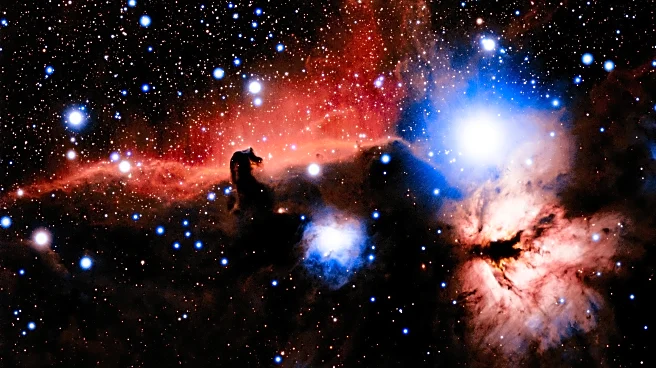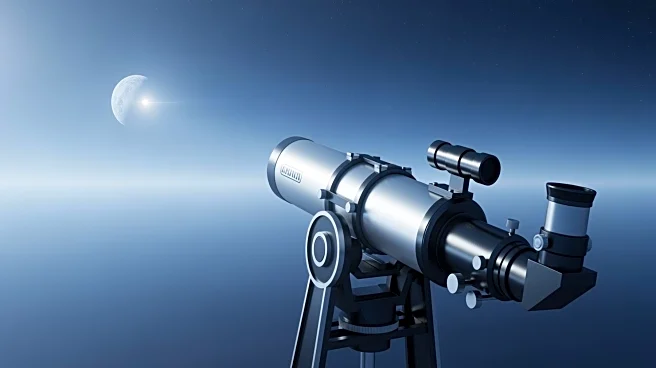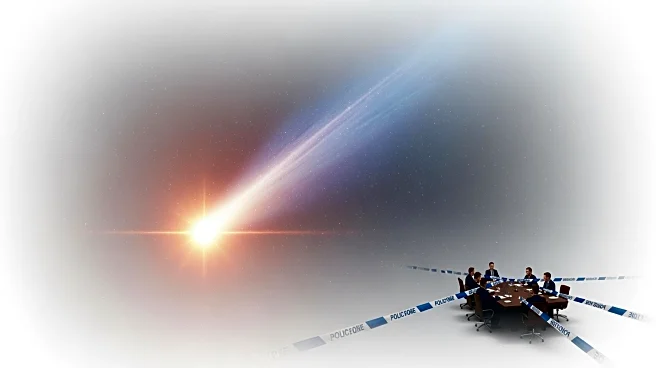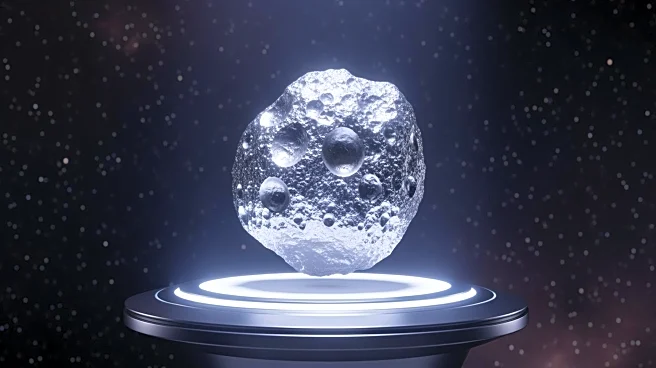What's Happening?
NASA's Solar Terrestrial Relations Observatory (STEREO) and the European Space Agency's Solar and Heliospheric Observatory (SOHO), along with NOAA's GOES-19 weather satellite, have observed an unexpected rapid brightening of the interstellar object 3I/ATLAS.
This object, suspected to be a comet, was first spotted in early July and has been traveling through the solar system at a high speed of approximately 137,000 mph. During its closest approach to the Sun on October 29, 3I/ATLAS exhibited a luminosity increase that surprised scientists, as it exceeded the typical brightening rate of most Oort cloud comets at similar distances. The object is noted for its distinctly blue color, suggesting significant gas emissions contributing to its brightness.
Why It's Important?
The unexpected behavior of 3I/ATLAS challenges existing understanding of interstellar objects and cometary physics. Its rapid brightening could provide insights into the composition and structural properties of such objects, potentially revealing unique characteristics acquired during its interstellar journey. This phenomenon may influence future studies on cometary behavior and interstellar object interactions with solar radiation. The findings could impact scientific approaches to tracking and analyzing similar objects, enhancing knowledge of the solar system's interactions with interstellar visitors.
What's Next?
Astronomers anticipate further observations once 3I/ATLAS reemerges from behind the Sun in early December. These observations could offer more detailed insights into its composition and behavior post-perihelion. Researchers remain uncertain about the object's future brightness trajectory, with possibilities ranging from continued brightening to rapid fading. The upcoming observations will be crucial in establishing a physical explanation for its behavior and refining models of interstellar object dynamics.
Beyond the Headlines
The study of 3I/ATLAS may contribute to broader discussions on the nature of interstellar objects and their potential origins. Understanding its composition and behavior could inform theories about the formation and evolution of celestial bodies beyond our solar system. This research may also have implications for the search for extraterrestrial life, as unusual characteristics of interstellar objects could hint at diverse planetary systems.















